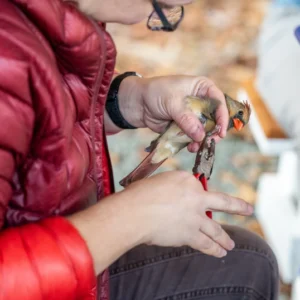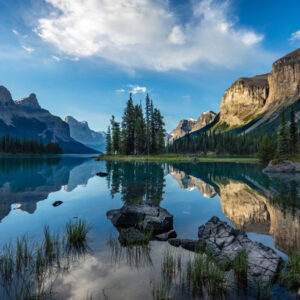Create Protected Areas, End Use of Pesticides
Nature Canada Carries Grasslands Conservation Message to International Forum
August 16, 2010 (Ottawa, Guanajuato) – North America’s native grasslands are rapidly vanishing, along with some of the continent’s most endangered species, but concerted action by national governments can turn the tide, Nature Canada plans to say before an international commission gathering in Mexico this week.
The Montreal-based Commission for Environmental Co-operation (CEC), a body created by NAFTA’s environmental side agreement in 1994, is holding its annual meeting on 16-17 August, in Guanajuato, Mexico, where experts will examine ways of improving environmental protection provided by each country.
Nature Canada will be urging the governments of Mexico, United States and Canada to focus the CEC’s efforts over the next 5 years on restoring the health of one of North America’s most imperiled ecosystems – our native grasslands.
North America’s central grasslands extend from the provinces of Alberta, Saskatchewan and Manitoba in Canada, south through the central, northern and mid-west United States to southern Texas into northeastern and central Mexico, and from western Indiana to the foothills of the Rockies.
The grasses, sand hills, coulees and riverbanks of the grasslands ecosystem sustain hundreds of plant and animal species, including the burrowing owl, peregrine falcon, California condor, northern leopard frog and pronghorn antelope.
About a quarter of the species North America’s three nations share, including many at the greatest risk of extinction, breed primarily in grasslands. Yet less than 20% of Canada’s native grasslands remain and many of the country’s grasslands species are in decline. In less than 5 years, Canada’s largest grassland bird, the Greater Sage Grouse, may be extirpated from Canada.
In a presentation scheduled for Tuesday, Nature Canada will call on the CEC’s member nations to deliver on two critical and long-overdue actions that only governments can take: creating additional protected areas, and ending the use of pesticides that kill birds and other wildlife.
“Less than 3% of the region’s grasslands are found inside protected areas,” said Carla Sbert, Nature Canada’s manager of conservation programs. “That figure should be at least 10% within each country.”
The CEC has already completed an important step by identifying the North American Grasslands Priority Conservation Areas. Also, many organizations in the three countries, including Nature Canada, are working to protect grassland areas on public and private land. The CEC’s leadership could leverage these efforts and build the momentum required to achieve the 10% target by 2015.
North America’s governments should also move immediately to end the use of pesticides that needlessly harm birds and other biodiversity.
“Birds are effective indicators of the health of our environment,” said Sbert, “and the message we’re receiving from grasslands birds is that we’re going down a disastrous path.”
Among the many factors contributing to bird declines, the use of pesticides is a major culprit. Research by Environment Canada’s own scientist, Dr. Pierre Mineau, has recently shown pesticides still kill millions of birds every year.
The good news is that this cause of bird mortality can be directly addressed through government action.
“The CEC could coordinate work to identify a list of pesticides of common concern that our governments can then phase out,” said Sbert. “At the same time, CEC can work on best management practices that support the transition to an Integrated Pest Management approach.”
In addition to calling for more protected areas and an end to harmful pesticides, Nature Canada also supports the CEC’s proposal to promote best management practices among ranchers, landowners and others who live and work within grasslands ecosystems. Governments should promote their widespread adoption by recognizing and rewarding those who follow such practices.



